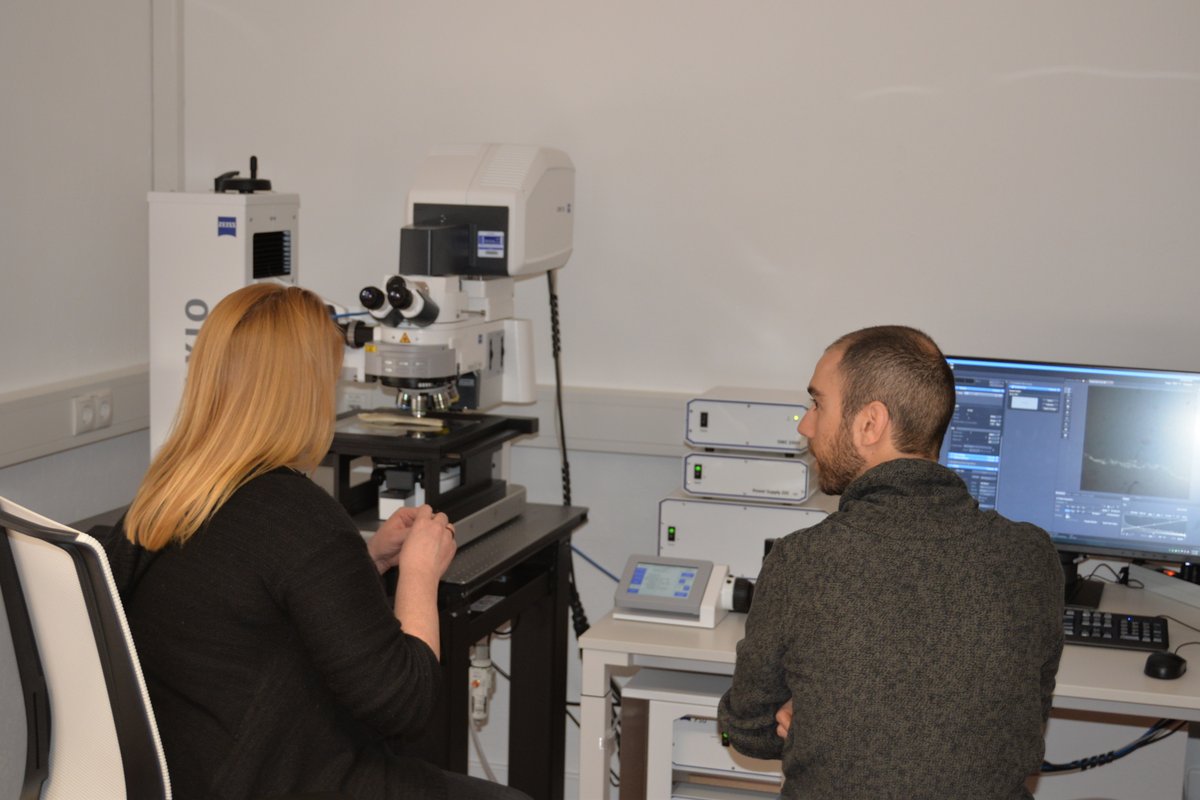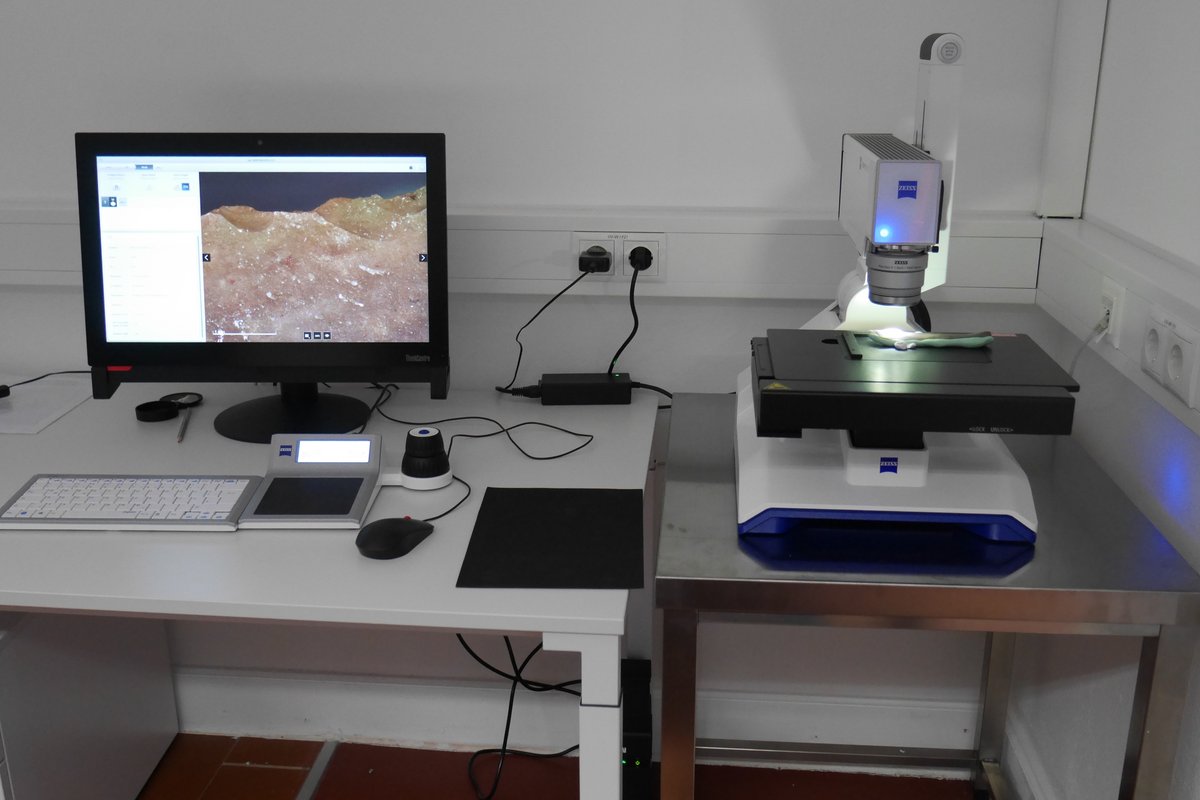Use-wear analysis and the development of quantitative methods
The Leibniz-Zentrum für Archäologie (LEIZA) has unique and outstanding skills in integrating and applying various methods and techniques to the study of past human artifacts. Complementary to the LEIZA expertise on archaeometry, experimental archaeology and restoration, a new line of research has been established on the study of micro traces on archaeological objects. To achieve this goal, the LEIZA developed the Laboratory for Traceology and Controlled Experiments (TraCEr), a new facility and research unit that aimed at expanding the field of traceology toward a science-based discipline, with an emphasis on standardized protocols, controlled and reproducible robotic experiments, and multiscale database. This approach will help ensure to a more reliable and comprehensive comparison between different materials and chronologies, allowing the long journey of human behavioral dynamics to be reconstructed.
The main purpose of TraCEr is to develop and carry forward ground-breaking functional studies that combine 1) methodological development and 2) fundamental research on Pleistocene and Early Holocene archaeology. To determine prehistoric tool use, archaeologists studying tools examine the traces left on their surfaces and edges for characteristic patterns of activities and worked materials. The very presence of diverse materials in artefact assemblages from different archaeological contexts shows that humans managed different resources and, therefore, technology was characterized by the production of different tools made from materials with different properties. Since the character of use-related wear traces on tools is known to vary in response to raw materials used in the past, the current state-of-the-art in functional analysis is to create an experiment-based reference collection by replicating potential past uses, such as hunting, butchery or woodworking. Although functional studies have been seen as a key discipline in paleoanthropological research, the need for methodological improvements has been debated during the last decade, mainly with regard to two questions: 1) experimental design and 2) methods to quantify macro and micro-wear patterns. These are the main foci of the research developed at TraCEr.
- Copy link
- Print article
Contact
- Dr. Joao Marreiros
- +49 2631 9772-271
- Kontakt
Team
- Dr. Joao Marreiros
- Dr. rer. nat. Ivan Calandra
- Walter Gneisinger
- Dr. Eduardo Paixão
- Geoff Carver
- SAPIENZA University of Rome (Italy)
- ICArEHB, UAlg (Portugal)
- Hebrew University (Israel)
- Institute for Forensic Sciences, Landeskriminalamt Nordrhein-Westfalen (Germany)
- University of Wroclaw (Poland)
- Ben-Gurion University of the Negev (Israel)
- Institute of Computer Science, Johannes Gutenberg-Universität Mainz (Germany)
- (University of Cologne)
- Senckenberg Research Institute and Natural History Museum (Germany)
- Paixao, E., Pedergnana, A., Marreiros, J., Dubreuil, L., Prévost, M., Zaidner, Y., Carver, G., Gneisinger, W. 2021. Using Mechanical experiments to study Ground Stone Tool use: exploring the formation of percussive and grinding wear traces on Limestone tools. Journal of Archaeological Science: Reports 37, 102971. https://doi.org/10.1016/j.jasrep.2021.102971
- Paixao, E., Marreiros, J., Dubreuil, L., Gneisinger, W., Carver, G., Prévost, M., Zaidner, Y. 2021. Functional analysis of the Middle Paleolithic Ground Stones Tools from Unit V of Nesher Ramla (Central Levant): the application of a multi-scale use-wear approach. Quaternary International 624 (94-106) https://doi.org/10.1016/j.quaint.2021.06.009
- Pedergnana, A., Calandra, I., Evans, A., Bob, K. Hildebrandt, A. 2020. Polish is quantitatively different on quartzite flakes used on different worked materials. PLoSONE 15(12), e0243295. https://doi.org/10.1371/journal.pone.0243295
- Pedergnana, A., Calandra, I., Bob, K., Gneisinger, W., Paixao, E., Schunk, L., Hildebrandt, A., Marreiros, J. 2020. Evaluating the microscopic effect of brushing stone tools as a cleaning procedure. Quaternary International, 569-570, 263–276. https://doi.org/10.1016/j.quaint.2020.06.031
- Marreiros, J., Calandra, I., Gneisinger, W., Paixao, E., Pedergnana, A., Schunk, L. 2020. Rethinking functional analysis as applied to the study of past hominin tool use. Journal of Paleolithic Archaeology 3, 475–502. https://doi.org/10.1007/s41982-020-00058-1
- Calandra, I., Gneisinger, W., Marreiros, J. 2020. A versatile mechanized setup for controlled experiments on archaeology. Journal of Science and Technology of Archaeological Research. STAR: Science & Technology of Archaeological Research 6(1), 30-40. https://doi.org/10.1080/20548923.2020.1757899
- Pedergnana, A., Ollé, A., Evans, A.A. 2020. A new combined approach using confocal and scanning electron microscopy to image surface modifications on quartzite. Journal of Archaeological Science: Reports 30, 102237. https://doi.org/10.1016/j.jasrep.2020.102237
- Marreiros, J., Pereira, T., Iovita, R. 2020. Controlled experiments in lithic technology and function, Special issue in Journal of Archaeological and Anthropological Sciences, Springer.
- Pedergnana, A. 2019. “All that glitters is not gold”: Evaluating the Nature of the Relationship Between Archeological Residues and Stone Tool Function. Journal of Paleolithic Archaeology 3, 225-254.https://doi.org/10.1007/s41982-019-00039-z
- Pedergnana, A., Ollé, A. 2019. Use-wear analysis of the late Middle Pleistocene quartzite assemblage from the Gran Dolina site, TD10. 1 subunit (Sierra de Atapuerca, Spain). Quaternary International 569-570, 181–211.https://doi.org/10.1016/j.quaint.2019.11.015
- Calandra, I., Pedergnana, A., Gneisinger, W., Marreiros, J. 2019. Why should traceology learn from dental microwear, and vice-versa? Journal of Archaeological Science 110, 105012. https://doi.org/10.1016/j.jas.2019.105012
- Calandra, I., Schunk, L., Bob, K., Gneisinger, W., Pedergnana, A., Paixao, E., Hildebrandt, A., Marreiros, J. 2019. The effect of numerical aperture on quantitative use-wear studies and its implication on reproducibility. Scientific Reports 9, 6313. https://doi.org/10.1038/s41598-019-42713-w
- Calandra, I., Schunk, L., Rodriguez, A., Gneisinger, W., Pedergnana, A., Paixao, E., Pereira, T., Iovita, R., Marreiros, J. 2019. Back to the edge: relative coordinate system for use-wear analysis. Archaeological and Anthropological Sciences 11, 5937–5948. https://doi.org/10.1007/s12520-019-00801-y


